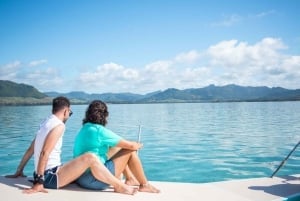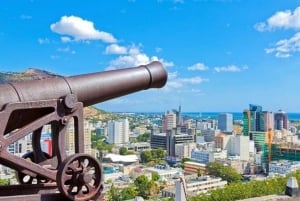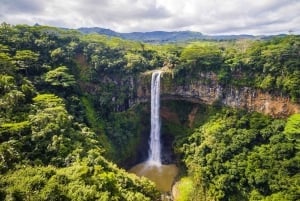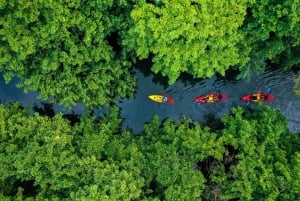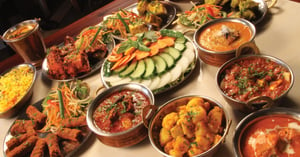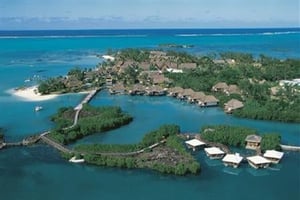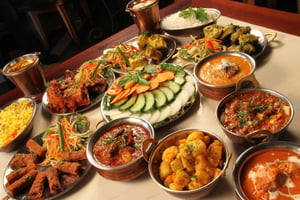Culture of Mauritius
Throughout the years, European, Indian, Chinese and African cultures have come together to make up the colourful and vibrant culture of the island
When you hear about Mauritius, the first thing which certainly pops up in your mind is the pristine beaches. But there is much more to this island than stunning shores. Here, you will be able to discover how centuries of colonization, slavery and immigration have created a multi-ethnic population with diverse traditions, religions, festivals, languages and a richly mixed cuisine.
Throughout the years, European, Indian, Chinese and African cultures have come together to make up the colourful and vibrant culture of the island. This melting-pot allows people of different faith and communities to live together in peace and respect, according to their own individual customs and traditions. The number of churches, temples, mosques and pagodas present in the landscape of the island reflects its rich cultural diversity. Thus Mauritius can be classified under the category of a cosmopolitan society.
Festivals – Having many religions and communities living together on the island means having festivals almost all year long. Throughout the year, a large number of diverse festivals are celebrated namely Sankranti, Cavadee, Chinese Spring Festival, Holi, Maha Shivratri, Mauritius National Holiday, Ougadi, Easter, Eid-ul- Fitr, Assumption of Blessed Virgin Mary, Ganesh Chathurti, Blessed Desiré Laval Pilgrimage, Divali, All Saints Day, Ganga Asnan, and Christmas. Though belonging to different ethnicities, people on the island celebrate all these festivals together and respect each other’s traditions. No matter at which period of the year are you visiting the island, you will be witness of a wonderful festive atmosphere.
Multi-Ethnic Cuisine - Another proof of the rich cultural diversity of the island lies in its cuisine. The cuisine of Mauritius is a blend of Creole, Chinese, European and Indian influences. Therefore there is no "signature dish" but rather a set of typical Mauritian food. It is common to have local meals made up of a combination of different cuisines. Most popular street food are rotis (Indian wheat pancakes), dholl puri (Indian pea pancake), briani, alouda (milk-based drink with tapioca), and various deep-fried bites (samussas, chili cakes, taro cakes...)
Part of the legacy of the French culture is French dishes like the bouillon, tuna salad, daube, civet de lièvre or coq au vin served with good wine. The mouth-watering aromas of the more exotic and oriental dishes brought by the Chinese and Indian migrants are sure to leave you wanting for more. Traces of both Northern and Southern Indian cuisine can be found in Mauritius. Some common preparations are curry, chutney, rougaille and pickles, most of which use local ingredients. The Mauritian versions of those dishes have a local flavor which is different from the original version.
The Chinese migrants who came have helped in making rice, the staple diet of the island, and making noodles, both steamed and fried, popular. Chinese appetizers such as hakien, crispy chicken and crispy squid have become part of the Mauritian folklore.
The charming tradition of the table d’hôte, captures the essence of the warm local welcome offering you Mauritian dishes in home cooking style. Look out for specialities such as Creole fish rougaille, daube (beef or chicken stew) and vindaye (deep-fried fish coated in turmeric, ginger, chillies and mustard seeds), Indian specialities like octopus curry as well as camarons (freshwater crayfish), palm hearts salad, and smoked blue marlin.
The production of rum is common throughout the island. While not as famed as its Caribbean counterparts from Cuba, Jamaica or Barbados internationally, Mauritian rum is very popular on the island and consumed in mostly all parties, you will surely have the opportunity to taste and love it while being here.
Traditional Music Folklore – You have not come across all the Mauritius folklore, if you have not danced to the rhythm of the Sega, the national folkloric dance of the island while being here. Sega is the local traditional music. It is usually sung in Creole (mother tongue of Mauritians). The origins of this music are not clearly defined but most claim that Sega music and dance, originate from the period of slavery. The Sega is based on three basic instruments: the ravanne, the maravanne and the triangle. The dancers wear colorful blouses and skirts with floral designs and sway their hips to the rhythmic music. Well-known traditional Sega singers include Ti Frére, Marlene Ravaton, Serge Lebrasse, Michel Legris and Fanfan. Bhojpuri songs of Indian origin are also quite popular.
Diverse Languages - The multi-ethnic characteristics of Mauritius make it a multi-lingual country. People in Mauritius speak a number of languages. Don’t be surprised to find English and French being commonly spoken in the country. English or French are the languages of choice for education, media, government, law and business. Other languages, including Hindi, Creole (Kreol), Tamil, Marathi, Urdu Mandarin and Cantonese and Indian dialects, like Bhojpuri are also spoken on the island. But the mother tongue of the island is Creole. The Creole (Kreol) language emerged as a result of interaction between French settlers and African slaves. The use of the Creole language transcends all ethnic, religious and class barriers.
Literature – While Creole (Kreol) is the mother tongue of the island and the mostly spoken language, most of the Mauritian literature is written in French. Some authors have chosen to write in English, Bhojpuri, and in Hindi as Abhimanyu Unnuth. Now you may also find a number of novels written in Kreol. Mauritius's renowned playwright Dev Virahsawmy writes exclusively in Kreol. Famous local talented authors include Malcolm de Chazal, Ananda Devi, Raymond Chasle, Loys Masson, Marcel Cabon, and Edouard Maunick. Lindsey Collen has been able to put in writing the unique social setup of this multi-faceted country through imaginary characters in her novels. Other younger writers like Shenaz Patel, Amal Sewtohul, Natacha Appanah, Alain Gordon-Gentil and Carl de Souza explore the issues of ethnicity, superstition and politics in their novels. Khal Torabully has put forward the concept of poems which are a blend of Indian and Mauritian cultural diversity. Other poets include Hassam Wachill, Edouard Maunick, Sedley Assone, Yusuf Kadel and Umar Timol.
Sports – Popular sports in Mauritius are football (soccer), athletics, badminton, basketball, boxing, kickboxing, bodybuilding, cycling, handball, judo, karate, table tennis, taekwondo, volleyball, and weightlifting, and horseracing. Mauritius is quite competitive at the regional level (inter-Ile) in the Indian Ocean. Mauritius hosted the second and the fifth edition of the Jeux des Iles de l'Océan Indien (JIOI) 1985 and 2003.
At the 2008 Summer Olympics, Mauritius has won its first Olympic medal. Bruno Julie has won the bronze medal in boxing
Horseracing, is part and parcel of the island's cultural heritage. Horse racing in Mauritius dates back to 1812, when the Champ de Mars Racecourse was inaugurated, making it the oldest racecourse in the Southern Hemisphere. Races are widely followed, both in terms of attendance at the Champ de Mars and television audiences. Mauritians of all ages like to discuss races, share tips and place bets.
Football is hugely popular on the island, especially the England's Premier League. The most followed clubs are Manchester United, Liverpool F.C., Chelsea, and Arsenal F.C.
At an amateur and recreational level there is a growing culture of participation in sport, with Trail Running, Cycling, Mountain Biking and Water Sports becoming increasingly accessible and popular.
The multi-ethnic culture on the island makes Mauritius one of the most diverse land in the world. Come and visit our multi-faceted Mauritius for an amazing experience!



